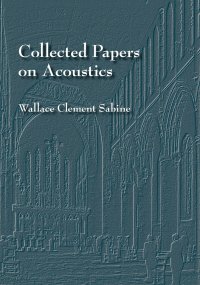This collection of papers by Wallace Clement Sabine, the Father of Architectural Acoustics, is an invaluable treasury of acoustical case history problems and their solutions. The papers are as useful today as when Sabine wrote them. They constitute a primer in architectural acoustics - straightforward and easy to follow, not just for the professional engineer and architect, but also for people who are not acquainted with the physical sciences. No doubt when engineers and architects hear of a book such as this - a collection of papers written by a theoretician, no less a Harvard professor - they will think of the book as an academic tome of little practical use. Wrong! This book shows us clear, simple methodology for solving today's acoustic problems. The three fundamental elements of architectural acoustics are loudness, reverberation and resonance. Interference, echoes and other phenomena are but subsets of these elements. Sabine explains that the problems of architectural acoustics require two distinct lines of investigation: one, to determine quantitatively the physical conditions on which loudness, reverberation, resonance and allied phenomena depend; the other, to determine the intensity that each of these elements should have, what conditions are best for the distinct audition of speech, and what conditions are best for music in its various forms. The physical investigation and its conclusions are based purely on scientific grounds; the other is a matter of judgment and taste. The spirit of Wallace Clement Sabine, this clear-thinking genius of architectural acoustics, shines ineluctably through time to reach us, as pure as when his words were first penned. Это и многое другое вы найдете в книге Collected Papers on Acoustics (Wallace C Sabine)
Collected Papers on Acoustics Wallace C Sabine
Подробная информация о книге «Collected Papers on Acoustics Wallace C Sabine». Сайт не предоставляет возможности читать онлайн или скачать бесплатно книгу «Collected Papers on Acoustics Wallace C Sabine»
